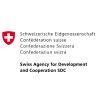DESCRIPTION OF THE PROJECT:
This project aimed to determine the nature and distribution of disabilities within the adult population of Ulaanbaatar, and the gaps in services and future service needs of persons affected by disabilities. This needs assessment was the first research of its kind in Mongolia to assess the needs of adults with disabilities using an inter-disciplinary approach including social, economic and health needs rather than exclusively focusing on health considerations.
The study examines to what extent people with disabilities lack access to health promotion and prevention services, and social and economic services, and to what extent they are susceptible to communicable and non communicable diseases, injuries, increased poverty, and social exclusion.
By studying the risk factors such as, lack of exercise and smoking behavior, lack of access to transportation, and lack of access to social welfare and health services and information, this needs assessment contributes to an improved evidence base for policy actions.
A report compiling the findings of the needs assessment and a set of practical recommendations aimed to increase the inclusion of people with disabilities in social welfare, employment, and health services was developed.
DESCRIPTION OF THE SERVICES PROVIDED:
- A needs assessment methodology and set of research instruments were developed by the project team;
- Data was collected from 209 adults with disabilities using the standardized interview method. To collect more in-depth data, case studies of eight persons with disabilities were conducted mainly using a face-to-face in-depth interview method. Moreover, expert interviews with eight officials and NGO representatives were conducted.
- Desk review of relevant policy documents (e.g. Law on Social Welfare, Law on Social welfare of people with disability, National program on employment) was conducted.
The primary data collected from quantitative surveys was processed using SPSS 17.0 software after thorough checks for technical and logical errors. The qualitative data was entered and analyzed with QDA Miner 3.2.9, qualitative data analysis software.
Related projects
-
Leveraging Science and Tradition in DRR in Mongolia III (LTS3), Final Evaluation
Client
International Organization for Migration
.png)

.png)

.png)
.png)
.jpg)




































